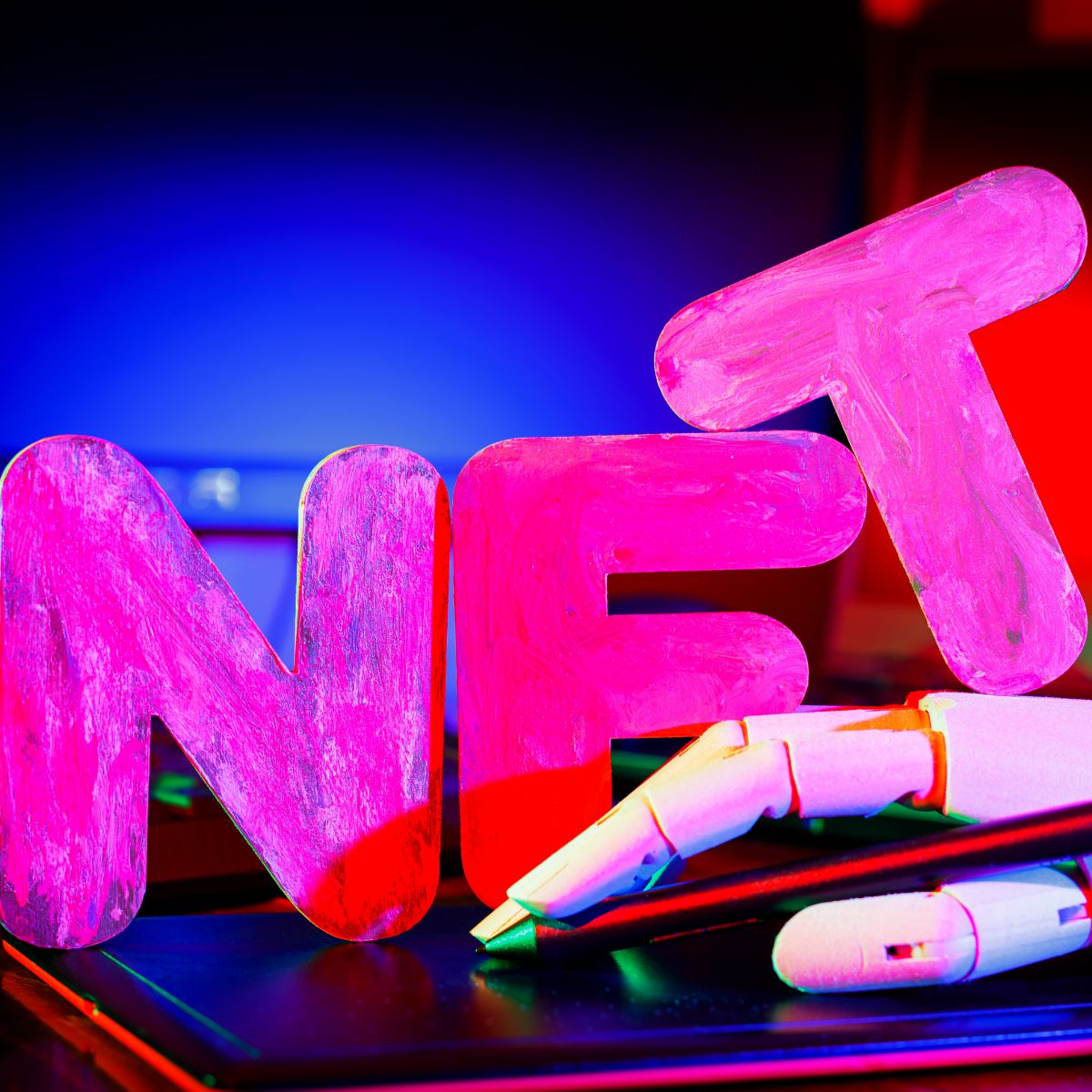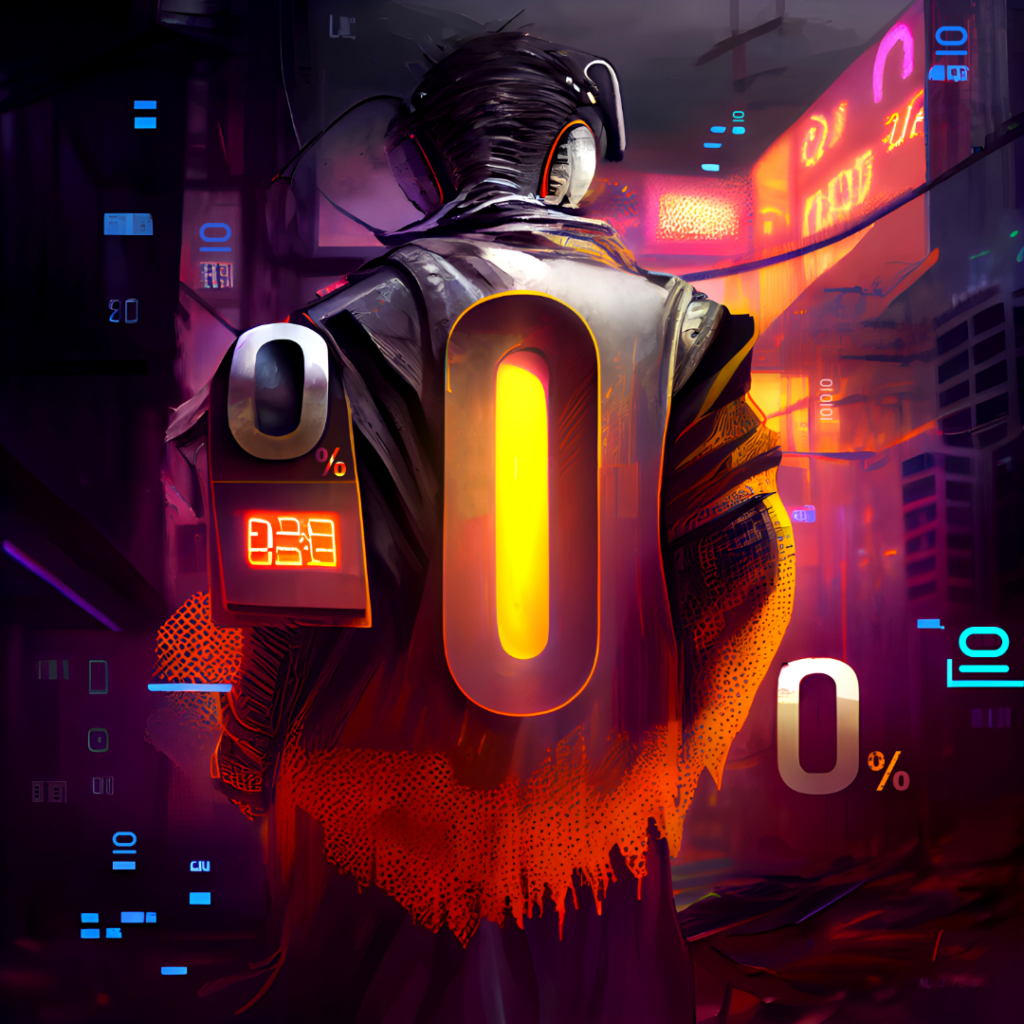“The best way to predict the future is to invent it.” This quote from Alan Kay, has never been truer. There is literally nothing but room to invent right now. Invention is taking place all around us. And for those at the forefront of Web3, the opportunities seem endless – that’s because they are.
Less than 10% of the world’s population owns cryptocurrency. Even fewer own NFTs or are engaged in DAOs. The rest have no idea what purpose any of these things serve. In a way, even those involved in the space, have no clue what the future holds. But they’re excited to figure it out.
And for those uninterested in exploring the intricacies of this space, brands [including influencers and celebrities] are poised to be their guide. To tell them the story of why this space matters and what it means for them – and for everyone. There has never been a more exciting time to be a brand, create a brand, or be a fan of one. Because everything is about to change – and connection, community and authenticity are at the core of this change.
These are the principles guiding brands into the future. Following these will present a world of opportunity for brands to engage with their existing fans and win over new ones.
The Benefits of NFT Marketing for Brands
For the past decade brands have relied heavily on social media to build their audience. Social media platforms are home to the masses, giving them leverage to dominate the advertising landscape. Brands allocate significant portions of their advertising budgets to them. Entire industries and departments are built around advertising, partnerships and content development for social media channels alone.
These channels are powerful. Maybe too powerful. With billions of users opening apps like Instagram and TikTok every minute, social media marketing is too huge an opportunity to ignore. But this opportunity comes with a price – usually a very high one. Besides cost, this reliance on social media for brand marketing has led to other challenges like brand dilution and a loss of control over valuable customer data.
This is where NFTs come in. An NFT (Non-Fungible Token) is a digital asset that represents an object or concept like art, music, a video, a certificate, or a key that gives the owner exclusive access to something. The technology behind NFTs removes reliance on these third-party platforms – giving power back to individuals and brands. For brands, this means a connection to customers and fans through direct engagement.
Why Your Brand Needs an NFT Marketing Strategy
NFTs help brands create memorable experiences by allowing them to connect directly to customers. Brands that provide continuous innovation can sustain that connection, building customer loyalty. This loyalty is key to long-term success. We’ve seen this with brands like Nike, McDonald’s, Coca-Cola, and even Snoop Dogg for decades.
How many times have we seen these brands reinvent themselves? And they’re doing it all over again. This time, they’re using NFTs. And these are just a few of the big players jumping on board the NFT train.
So why are NFTs a big part of the new marketing strategies for these innovative brands? And why should they be included in your brand’s marketing strategy? Because NFTs are quickly becoming the most powerful tool out there to provide brand awareness and customer engagement – the two things that marketing is always trying to get right.
Brand Awareness
Advertising on social media is expensive – and complex. What used to be a simple ad set-up, has now become a matrix of algorithms, partnerships and constant content development. And, with all the competition and noise on these platforms, getting your brand in front of your target audience has never been more difficult.
That’s why innovative brands are moving away from this third-party marketing model back to a direct marketing one. In some ways, this mimics the old model of advertising where companies used unique tactics to find their customers and engage with them directly. Except, instead of physical spaces, this advertising takes place in virtual ones.
Customer Engagement
The technology behind NFTs allows brands to regularly engage with, track and reward their most loyal customers. Think, likes and shares or regular product purchases. The bigger the fan, the higher the engagement, the cooler the rewards. This engagement builds up over time, helping establish a deeper connection between the brand and its customer(s).
Brands early to this space also benefit from the accumulation of their products in digital collections. Collections are already helping users form their digital identities. So, the earlier a brand enters the space, the more items their customers can collect. Giving brands the opportunity to increase their presence in the [future] metaverse.
How Brands are Using NFT Marketing
Right now, NFTs appear limited to digital collectibles. But this creates a block for those trying to understand their potential. Brands already using NFTs seem to share a common understanding: that their value isn’t about scarcity, but uniqueness. This can come in the form of a product, service, or even social currency.
People in the digital space, are attaching themselves to brands or causes – something bigger than just them. We’re seeing this in both newly formed digital organizations [DAOs], and physical consumer brands entering the space. Among them, a shared goal to create new virtual communities grounded in value alignment.
The New Kids on the [Brand] Block: DAOs
DAOs (decentralized autonomous organizations) allow groups of people who share a common goal to operate as an independent organization [focused on achieving that goal]. Each DAO serves some purpose for everyone engaged in the organization.
Anyone involved agrees to abide by the terms outlined in the smart contract associated with the DAO. There is no hierarchy, and resources are pooled to benefit the organization and its objectives. This might look like:
- A venture capital firm committed to providing funds for specific types of projects.
- A freelance network that pools resources like software subscriptions.
- Community funds used to collect group assets like art or antiques.
- A group responsible for donation approvals that benefit a charitable cause.
Members buy into DAOs using the DAOs’ signature token(s). The more tokens a member holds, the higher the member’s credibility from the organization’s standpoint. DAOs are poised to become the norm for organizational structure, disrupting the hierarchical standard set by traditional companies.
Legacy Brands Experimenting with NFTs
Already known for innovative marketing, these iconic brands are experimenting with NFTs using the products that their customers already know and love:
Taco Bell released its first NFTs in March 2021 to mixed reviews. The launch of 25 NFTs sold out in 30 minutes. Many NFT die-hards claimed that the brand missed the mark. But buyers got a $500 gift card, proceeds went to the Live Más Scholarship fund, and the resale value of the NFTs skyrocketed. So, this taco drop couldn’t have been all that bad.
McDonald’s launched its first NFT to celebrate the 40th anniversary of the McRib. In an associated press release the famous fast-food giant claims that: “With the McRib NFT, you’ll never again have to say goodbye to the sandwich you love.” These coveted digital sandwiches now live on forever in the hearts [and crypto wallets] of ten lucky McRib enthusiasts.
Coca-Cola is one of the most collectible brands in the world. The famous soda brand never ceases to amaze with its innovative marketing tactics. Entry into the NFT space is no exception. In November 2021, Coca-Cola auctioned off four unique multi-sensory NFTs that came together in a package called The Friendship Box. The proceeds from the popular digital sale went to their long-standing partner, the Special Olympics.
Introducing the Friendship Box NFT! Scroll down to see the full collection. 👀 #NFTCommunity #OpenSeaNFT
— Coca-Cola (@CocaCola) July 29, 2021
Tap for details: https://t.co/SIJ0HnNfdu pic.twitter.com/JRESwHQ3So
Other brands like Campbell’s, Nike, and Microsoft all have their own NFTs. These companies are already pouring marketing cash into Web3 in an effort to gain market share in this [emerging] digital space.
How you Can Use NFT Marketing for your Brand
What we’re seeing right now, is akin to the dawn of the dot com era. Back then, innovative companies didn’t just purchase domains and throw them on the back burner. They integrated those domains into their strategy. And they built. They had no idea what they were building, but they continued to build. And we all watched as those domains evolved from blank digital properties to robust websites to massive e-commerce platforms.
This is what’s happening right now with the metaverse, DAOs, NFTs and everything Web3. Without knowing exactly where these projects will take them, companies just know that they need to build.
But if this is totally new, it’s hard to figure out where to begin. A good starting point is to look at what your company currently offers. What product(s) or service(s) are you already known for? How can you turn these offerings into limited designs or exclusive access? Can you work with creators to help increase the value of these offerings?
NFTs are a great place to start. And in case you need a few ideas to get the juices flowing, try these:
Start with Digital Collectibles.
There is a reason why NFTs started with art. No asset in the world represents exclusivity more universally than art. The art world has done a fantastic job embedding this notion into our subconscious. But the reality is that art is readily available. It’s just that we’ve all been told that some art matters, while most doesn’t. Making the art that “matters” an object of [perceived] value [and scarcity]. In some sense, the art industry tricked us all into deifying something that has no real business being deified. It’s all perception.
The same goes for collectibles. If you own a sealed original of Nirvana’s Nevermind or a mint condition Water Lily Barbie, you are in possession of something of [perceived] value. Not because there weren’t hundreds made, but because the ones made were limited. And now people want to collect those limited items, driving up their price.
Creating collectibles is about balancing availability and exclusivity. We can’t predict what’s going to blow up in the future. But by creating limited a limited series of NFTs for your customers and fans, you could be cementing your brand in collectible history [and potentially establishing a new revenue stream as these collectibles make their way into secondary markets].
Create NFTs that Connect to Your Core Product.
If you’re an established brand, you already have customers who buy and enjoy your existing product. Don’t try to reinvent the wheel. You know your products. You know what works. So, make them digital.
Nike is a great example. What is Nike known for? Shoes. So, would it make sense for Nike to suddenly start selling couture bridal gowns as NFTs? No. This would only confuse their fans and potentially alienate them completely. Nike knows what they’re good at, so they brought what they’re good at into the digital world.
Nike began its journey into the metaverse by filing a public patent in 2019 for an NFT-enabled physical shoe. This NFT represents a digital shoe that is worn by its owners in videos games or other digital environments. Owners of these digital shoes may soon be able to use their digital genetic codes to integrate new designs and customize their kicks. Further into the future, owners may also be able to 3D print actual pairs of physical shoes using Nike ID.
No one knows where this will all go, but Nike is willing to allocate a big chunk of its marketing budget to find out. The brand increased their presence in the NFT space even further with the acquisition of RTFKT Studios in December 2021. This collaboration officially makes Nike one of the biggest consumer brands in the NFT space to date.
Try New Things and Stay Authentic to your Brand.
McDonald’s didn’t limit their NFT activity to a single McRib drop. In China, the company also released a series of 188 Big Mac Rubik’s Cubes. Novelty toys are a mainstay in McDonald’s’ marketing toolbox. They have been since 1979 when McDonalds launched its first happy meal toy. Today, these little plastic toys continue to be rooted in the identity of the iconic fast-food chain. So, when it came to creating an NFT, McDonald’s didn’t need to look very far for inspiration. They already knew what resonated with their customers, so they ran with it.
Conclusion
There are so many ways that brands can integrate NFTs. So how can your brand use NFTs to connect with your own customers on a deeper level? This connection is becoming especially important in permission marketing where consumers have become much savvier. These savvy buyers can now spot overtly sales-focused marketing from miles away. So, brands need a new approach – one rooted in authenticity and connection. NFTs provide the technology to build on this approach.
And, if you’re still short on ideas, big brands are launching new NFT projects every day. So, if you’re looking for some inspiration, we suggest bookmarking this AdAge list. This list updates big brand NFT launches in real-time. Use these ideas. Look for more. Start inventing, or [re]inventing the way you market to your customers. Because Web3 may feel like a distant thing, but for millions, it’s already here. It won’t be long before this number turns into billions – and your brand needs to establish its presence [in this space] before it does.
Get engaged in NFTs – join the OIX Discord community now!











